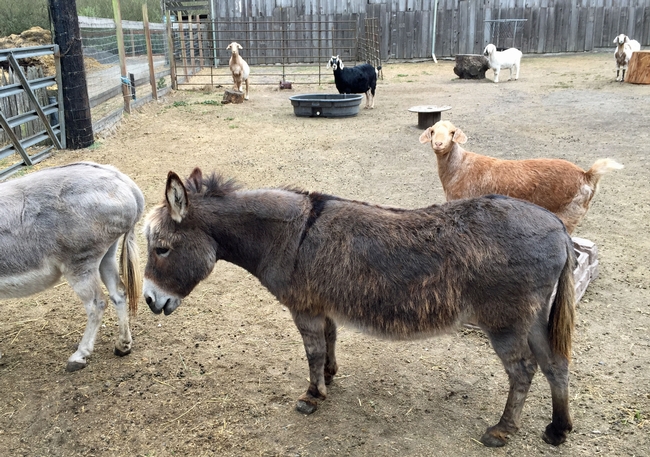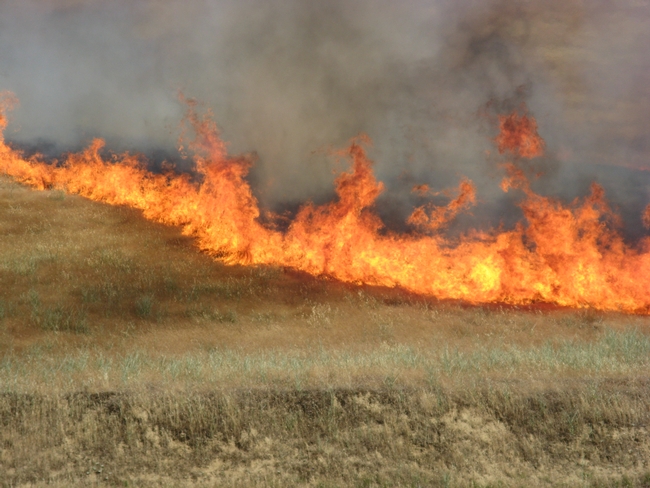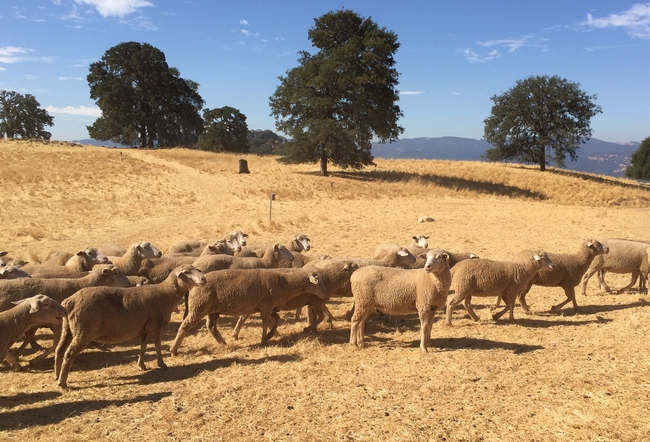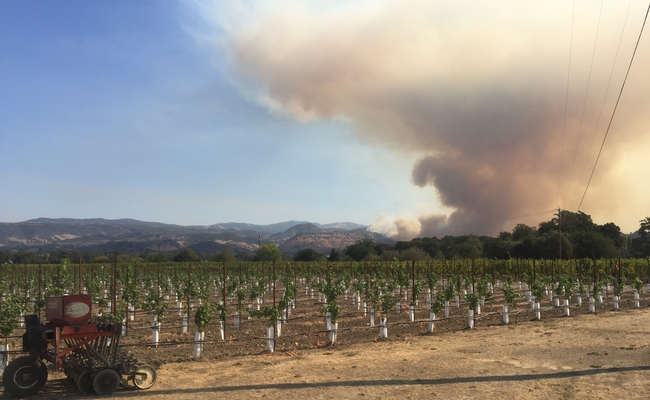- Author: Pamela Kan-Rice
Fire Impact and Risk Evaluation (FIRE) survey.
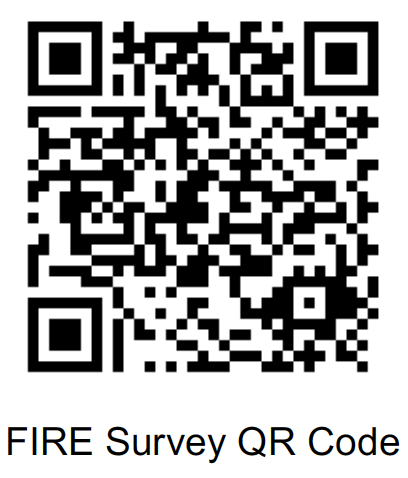
“We will aim to quantify the impact of wildfires in different livestock production systems,” said Beatriz Martínez López, director of the Center for Animal Disease Modeling and Surveillance in the UC Davis School of Veterinary Medicine. “The idea is also to create a risk map showing areas more likely to experience wildfires with high economic impact in California.
“This economic and risk assessment, to the best of our knowledge, has not been done and we hope to identify potential actions that ranchers can take to reduce or mitigate their losses if their property is hit by wildfire.”
Martínez López, who is also an associate professor in the Department of Medicine & Epidemiology at UC Davis, is teaming up with UC Cooperative Extension livestock and natural resources advisors and wildfire specialists around the state to conduct the study.
“Right now, we have no good estimate of the real cost of wildfire to livestock producers in California,” said Rebecca Ozeran, UC Cooperative Extension livestock and natural resources advisor for Fresno and Madera counties. “Existing UCCE forage loss worksheets cannot account for the many other ways that wildfire affects livestock farms and ranches. As such, we need producers' input to help us calculate the range of immediate and long-term costs of wildfire.”
Stephanie Larson, UC Cooperative Extension livestock and range management advisor for Sonoma and Marin counties, agreed, saying, “The more producers who participate, the more accurate and useful our results will be.”
“We hope the survey results will be used by producers across the state to prepare for wildfire,” said Matthew Shapero, UC Cooperative Extension livestock and natural resources advisor for Ventura and Santa Barbara counties, “And by federal and private agencies to better allocate funds for postfire programs available to livestock producers.”
The survey is online at http://bit.ly/FIREsurvey. It takes 15 to 30 minutes, depending on the number of properties the participant has that have been affected by wildfire.
“Survey answers are completely confidential and the results will be released only as summaries in which no individual's answers can be identified,” said Martínez López. “This survey will provide critical information to create the foundation for future fire economic assessments and management decisions.”
- Author: Pamela Kan-Rice
To help people prepare, CAL FIRE has a checklist for evacuation online at http://www.readyforwildfire.org/Evacuation-Steps. UC Agriculture and Natural Resources scientists contributed to the research behind the recommendations.
A one-page checklist online at http://disastersafety.org/wp-content/uploads/2016/07/IBHS-Wildfire-Last-Minute-Checklist.pdf, also based on research by UC ANR scientists, is available from the Insurance Institute for Business & Home Safety.
Napa County residents have been told to be prepared in case they need to leave.
“We have team members tending to their own homes and or family's needs, providing support in shelters, and being available for immediate clientele needs in any way they can,” said David Lewis, UC Cooperative Extension director in Napa and Marin counties. “We look forward to calling upon UC colleagues with more experience to support our communities in the long recovery period. For the immediate future, we will stay focused in our efforts to support evacuation and shelter efforts – personal safety and needs are priority one until the fires no longer pose a threat.”
The main thing to remember when preparing to evacuate is to protect your life first.
“Don't die trying to prepare your house before you leave,” said Yana Valachovic, UC Cooperative Extension director and forest advisor in Humboldt and Del Norte counties. “Monitor the situation, watch the wind directions, and listen to all emergency personnel.”
To receive timely updates on fire conditions, Brian Oatman, UC ANR Risk & Safety Services director, uses Nixle. “While some communication methods may not work due to outages, the more sources we have, the better the chance that the message gets through,” Oatman said. To sign up for text alerts, visit http://www.nixle.com or text your zipcode to 888-777 to opt-in.
“We have coordinated with CropMobster to create a resource list at https://sfbay.cropmobster.com/bay-area-fire-resources where anyone can post any needs or offer help of any kind,” said Stephanie Larson, UC Cooperative Extension director in Sonoma County. “UCCE Sonoma has also created a Disaster Recovery for Agriculture Operations at http://cesonoma.ucanr.edu/Disaster_Resources for homeowners and managers of rangelands. UCCE is working closely with Sonoma County to provide UC ANR resources to assist with the recovery of our community that has been devastated by this fire.”
In Yuba County, the Cascade fire is 45 percent contained as of Oct. 12. “Evacuation orders are being lifted in parts of Yuba County,” said Janine Hasey, UC Cooperative Extension director for Sutter and Yuba counties. “Kate Wilkin, our new UC Cooperative Extension forestry, fire science and natural resources advisor in Sutter, Yuba, Butte and Nevada counties, has assembled resources for residents who are returning to their homes at http://cesutter.ucanr.edu/Fire_Information. We will be updating the website with more recovery information in the coming days.”

